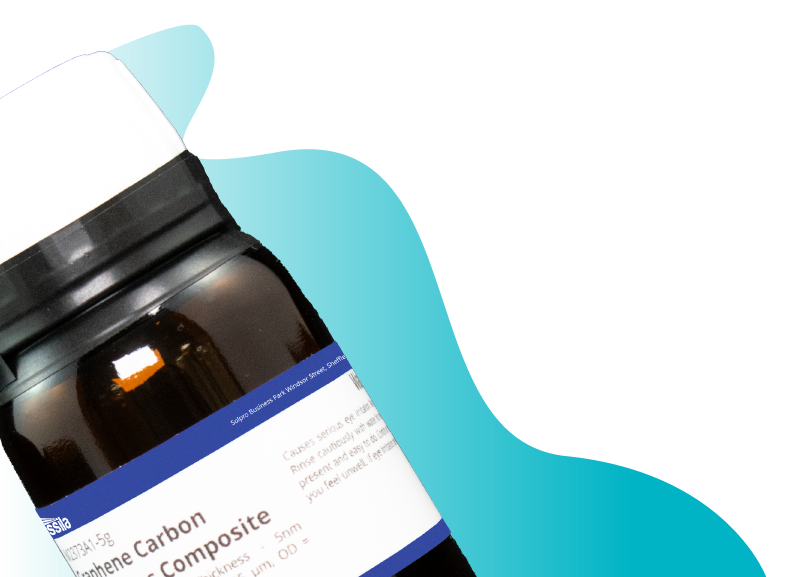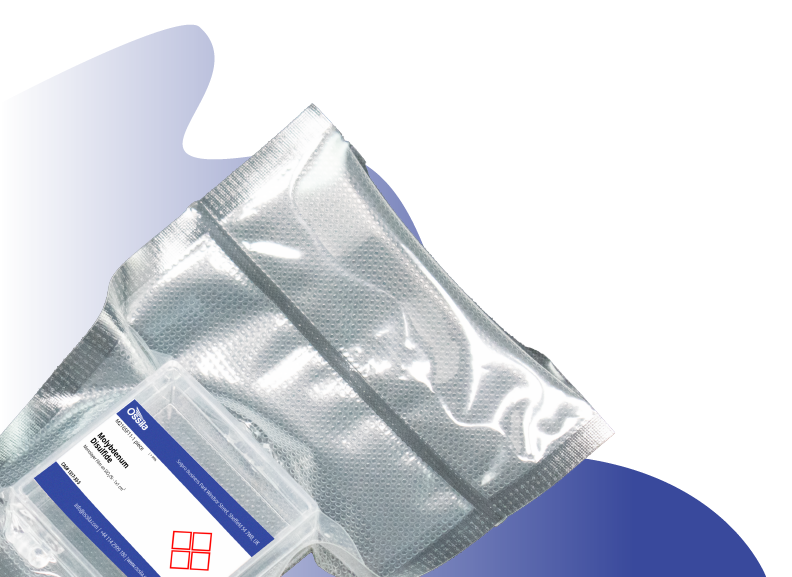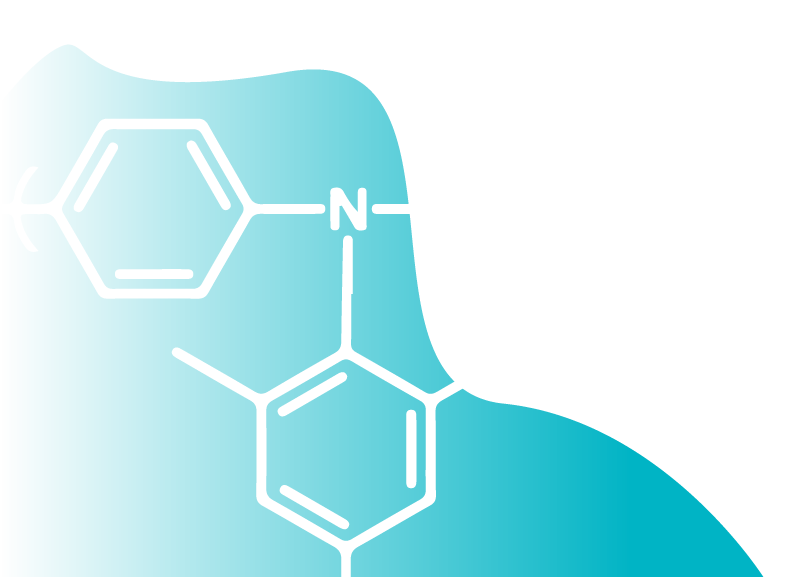Double-Walled Carbon Nanotubes (DWCNT)
CAS Number 308068-56-6
Carbon Nanotubes (CNTs), Low Dimensional Materials, MaterialsDouble-Walled Carbon Nanotubes (DWCNTs)
Allow high doping concentrations without affecting properties of the nanotubes
Product Information | MSDS | Related Products
Double-walled carbon nanotubes (DWCNTs), CAS number 308068-56-6, are part of the one-dimensional material family and are similar to single-walled carbon nanotubes (SWCNTs). DWCNTs consist of two nanotubes, one nested inside the other. The difference in their diameters leads to a variety of interactions, allowing for combinations of electronic properties such as semiconducting or metallic behavior. These interactions make DWCNTs particularly interesting for research. Unlike SWCNTs, the outer nanotube can be modified without altering the inner one, allowing functionalization for solubility or doping without affecting the overall properties. This flexibility makes DWCNTs valuable for applications such as additives in composite materials.
DWCNTs offer enhanced mechanical strength, thermal stability, and chemical resistance compared to SWCNTs. Synthesis of DWCNTs like arc discharge and catalytic chemical vapor deposition yields 50% to 90% purity, requiring further purification to isolate DWCNTs from SWCNTs and multi-walled nanotubes. Just like with single-walled carbon nanotubes, there are many different areas in which DWCNTs can be applied due to their impressive mechanical and electrical properties. In addition, double-walled nanotubes show an increase in mechanical strength, thermal stability, and also chemical stability over that of single-walled nanotubes.
The ability to combine different nanotube types could lead to interesting optical, electronic and mechanical properties that are not possible with single-walled nanotubes, and could result in the most interesting research in the coming years.
Various Applications
Applications in hydrogen storage, catalysts, solar cells, and biosensors
Low Cost
Low Cost DWCNTs
Versatile
Useful mechanical, electrical, thermal, and optical properties
Worldwide shipping
Quick and reliable shipping
General Information
| CAS Number | 308068-56-6 |
|---|---|
| Chemical Formula | CxHy |
| Recommended Dispersants | DI Water, DMF, THF, Ethanol, Acetone |
| Synonyms | DWCNTs, Double-walled CNTs. Double wall carbon nanotubes |
| Classification or Family | 1D materials, Carbon nanomaterials, Nanomaterials, Polycyclic aromatic hydrocarbons, thin-film electronics |
| Appearance | Black fibrous powder |
Chemical Structure
Product Detail
| Product code | M2016L2 | M2016L3 |
|---|---|---|
| Diameter (nm) | 2 – 4 | 2 – 5 |
| Length (μm) | 48 | 5 – 20 |
| Surface Area (m2/g) | > 200 | 320 |
| Purity | > 65% | > 91% |
MSDS Documents
Double-Walled Carbon Nanotubes MSDS Sheet
Dispersion Guide
Similarly to single-walled carbon nanotubes, DWCNTs are insoluble. But by using a combination of surfactants and ultrasonic vibration, it is possible to disperse and suspend small concentrations of nanotubes. For dispersing in aqueous solutions, we recommend the use of sodium dodecylbenzene sulfonate if an ionic surfactant is suitable. If a non-ionic surfactant is needed, we recommend surfactants with high molecular weights.
- Weigh out the desired amount of carbon nanotubes.
- Mix together your solvent and surfactant of choice at the desired surfactant concentration. This should be below the critical micelle concentration of the surfactant.
- Add the solvent-surfactant mix to the dry powder and shake vigorously to mix.
- Either place an ultrasonic probe into the solution or place the solution into an ultrasonic bath. Be careful about the length of time and power used - as damage to the carbon nanotubes can occur, shortening their average length.
- The resulting solution will be a mixture of suspended single walled nanotubes and bundles of single walled nanotubes; further sonication will help break up the bundles.
- To separate out the individual nanotubes in solution from the bundles, the solution should be placed into a centrifuge. If the solution is centrifuged for a longer time and/or at a higher speed, the smaller bundles will be removed narrowing the distribution of suspended nanotubes.
Functionalized DWCNT's can be dispersed without the use of surfactants, a maximum of 0.1mg/ml can be achieved for COOH and OH.
Literature and Reviews
- Double-Walled Carbon Nanotubes: Challenges and Opportunities, C. Shen et. al., Nanoscale, 3, 503-518, (2010) DOI: 10.1039/C0NR00620C
- Properties and Applications of Double-Walled Carbon Nanotubes Sorted by Outer-Wall Electronic Type. A. A. Green et. al., ACS Nano, 5, 2011, 1459-1467, (2011) DOI: 10.1021/nn103263b
- Linking Chiral Indicies and Transport Properties of Double-Walled Carbon Nanotubes, M. Kociak et. al., Phys. Rev. Lett., 89, 155501, (2002), DOI: 10.1103/PhysRevLett.89.155501
Related Products
We stock a wide range of low dimensional materials available to purchase online. Please contact us if you cannot find what you are looking for.



